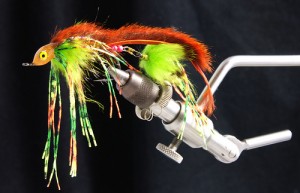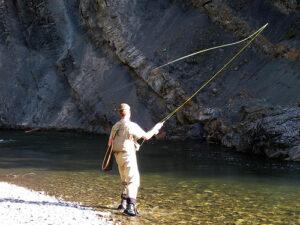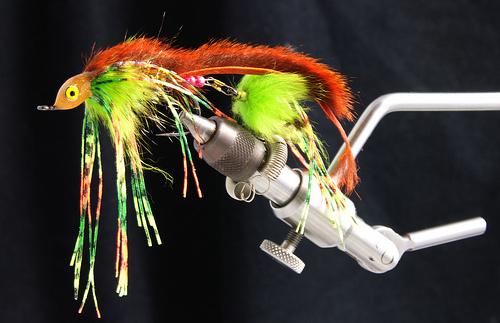This post was last updated on December 3rd, 2022 at 07:42 pm
Streamer fishing is a great way to target the largest brown trout out of an area. By using streamers you are limiting the size of the trout that can eat your fly (since streamers tend to be quite large).

The largest fish in the river are much more carnivorous than the smaller ones. They tend to specifically eat more trout and other small bait fish than the smaller sized trout do.  This is where the streamer comes in. It is made to mimic bait fish and smaller trout. During times of high dirty water it can be hard to consistently catch fish on nymphs and dry flies—this is a great time to throw streamers! They come in all shapes, colors and sizes. The weight of streamers can also vary from weightless, to triple wrapped lead hooks with heavy weighted heads.  Materials used in streamers can consist of rabbit fur, maribou ( ostrich feathers), stringy rubber legs and practically just about any other fly tying material (pretty much all of which are represented in the photo above). There are many types of soft materials that tend to pulsate and undulate when they are underwater making for great streamer materials.
The Art of Casting a Streamer:
Some are easier to cast than others! The light weightless ones can easily be casted with the standard fly cast. The extremely heavy ones need to be casted with a little more caution. It is best to stick with smaller flies until you have developed the ability to cast pretty good. Â I know guides who actually wear helmets when certain people are near them throwing large streamers. You will need a fly line that can turn over a large heavy fly, such as some specifically large weight forward lines.

Fishing a Streamer:
To properly fish a streamer is a great skill. You throw your fly beyond where you think the fish will be and strip it back toward yourself. This technique will produce a pulsating action and encourage the fish to hit. The rate of speed at which you strip the streamer can (and should) vary until you find the speed the fish want. There are times when fish are sluggish and they prefer to eat a very slowly stripped fly, other times you need to strip it as fast as you can. They tend to key on particular colors on certain days—even though the day before the conditions seemed the exact same the fish could crave an entirely different color and speed of stripping.
If there were rainbow trout recently planted in an area that would be an instance where the fish would be interested in eating a lifelike representation of a rainbow. The fish usually respond best to “attractor” type patterns that look nothing like anything in nature.
You can fish streamers by casting either upstream or downstream. It is debatable which way works better consistently. Some people swear the only way to fish them is by stripping them up stream etc. I have found that they both have their days. If you have never been introduced to the joy of streamer fishing for trout, you have been missing out on some very fun fishing.


